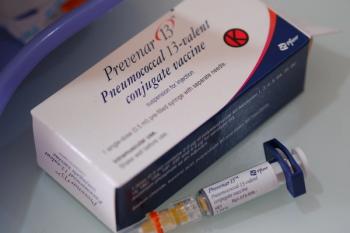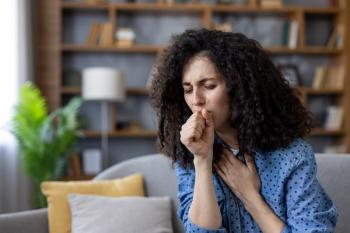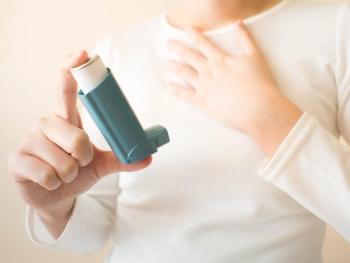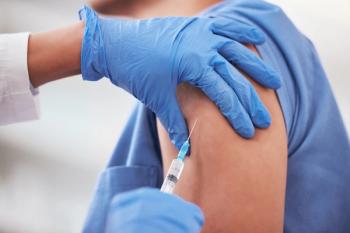
- Drug Topics January 2023
- Volume 167
- Issue 01
Know Your Winter Respiratory Illness
With the respiratory season in full swing and COVID-19 continuing to infect, knowing the basics of the common cold, influenza, COVID-19, and respiratory syncytial virus can help ensure patients get the right care.
As the calendar flips to January, the United States is in the middle of a full-force “tripledemic,” with COVID-19, influenza, and respiratory syncytial virus spreading like wildfire. Add in the common cold, which is also making its rounds this season, and pharmacists are likely to experience a store full of coughing, congested patients seeking counsel and symptomatic relief. To help, we’ve compiled a quick reference guide for each of these respiratory conditions.
Influenza
- Influenza symptoms usually include headache, cough, muscle aches, tiredness, sore throat, runny or stuffy nose, fever, and shortness of breath or difficulty breathing.1
- Nausea, vomiting, and diarrhea can sometimes occur but are more common in children. Loss of taste or smell rarely occurs.1
- Like COVID-19, influenza is a contagious respiratory virus. Both viruses spread similarly, but influenza is caused by the influenza A or B viruses.1
- Several tests can determine whether a patient has influenza rather than another illness.2 Rapid influenza diagnostic tests are the most common of these tests.
- Patients with influenza can be treated with influenza antiviral drugs.3 These treatments are available in the form of pills, liquids, inhaled powders, or intravenous solutions, but they are not available OTC. Patients must be prescribed these medications by their health care provider.
- Individuals infected with influenza should take precautions to not spread the virus. While sick, they should stay away from others, wash their hands often, clean and disinfect surfaces and objects, and cover their nose and mouth when coughing and sneezing.1
- Fortunately, influenza can often be prevented by receiving the annual influenza vaccine. Even if a patient has already been infected with influenza, they should still receive the vaccine.3
Common Cold
- Each year, adults experience an average of 2 to 3 colds, and children may experience even more.4
- Cold symptoms usually include cough, sneezing, sore throat, and runny or stuffy nose. They can also include muscle aches, tiredness, loss of taste or smell, and fever. Symptoms do not include diarrhea, nausea, or vomiting.4
- Common cold symptoms usually appear 1 to 3 days after exposure to a cold-causing virus. A cold is usually harmless; most individuals recover in 3 to 10 days. However, a cold can sometimes last 2 to 3 weeks.
- Common cold is often caused by rhinoviruses. Rhinoviruses spread in ways that are similar to the spread of COVID-19.
- It is not necessary for patients to see a health care provider if they suspect they have a cold unless symptoms persist or worsen.4 Unfortunately, there is no cure for the common cold, but colds do improve over time without treatment.
- Symptoms can be relieved by using OTC medications. OTC medications can manage fevers, body aches, congestion, and cough. Throat lozenges and saline nasal drops/sprays are also a good option.4
- It’s important to remind patients that antibiotics will not help manage a cold.4
- In addition to OTC medications, other remedies include drinking plenty of fluids, sipping warm liquids, resting, and gargling salt water.
Respiratory Syncytial Virus (RSV)
- RSV is considered a seasonal illness and is typically active from late fall to early spring.5
- Who’s at risk? Premature infants; infants younger than 6 months; individuals who are immunocompromised, have a chronic lung condition, or have a congenital heart condition; and adults 65 years or older are at increased risk for severe cases.5
- Common symptoms for all ages include cough, runny nose, sneezing, wheezing, and fever. Severe symptoms in children younger than 5 years include noisy breathing, blue or gray color in lips and fingernails, and pausing during breathing.5
- Older children and adults may experience mild headache, fatigue, or sore throat.5
- RSV is commonly diagnosed following a medical history and an accounting of the patient’s symptoms. A pulse oximeter or swab test may also be used to diagnose RSV.5
- Imaging may be used to evaluate a patient’s lungs if severe illness is suspected.5
- Injections of palivizumab may protect younger children at risk for serious complications. The first injection should be administered at the start of the RSV season and monthly for the rest of the season.6
- There are no effective antiviral medications to manage the condition. Parents should manage symptoms with OTC medications such as fever medications. However, children should not be given OTC cold medicines because of safety concerns.7
- An infection does not provide lifelong immunity, and patients can be reinfected in a single RSV season. Reinfection is typically milder, although older patients and those with comorbidities are at risk for more serious illness.5
COVID-19
- At press time, the Omicron variant is the dominant circulating COVID-19 variant. Subvariants of interest include BA.2.3.20, XBB, BA.4.6, BA.2.75, BA.5, BQ.1, BQ.1.1, and BF.7.
- Symptoms appear 2 to 14 days following exposure, with time to onset varying among the variants. Common symptoms include fever, cough, shortness of breath, headaches, and sore throat. Loss of taste or smell may also occur as a result of infection.8
- Conditions such as diabetes, asthma, and pregnancy can put a patient at risk for increased disease severity.9
- COVID-19 is diagnosed with a test, either at home or in a health care setting. Patients who suspect they have COVID-19 but attain a negative test result should be mindful of the possibility of a false negative result. This may result from testing too early or collecting an inadequate specimen.8 The FDA recommends serial testing to help reduce the risk of a false negative test result.10
- Nirmatrelvir/ritonavir (Paxlovid) and molnupiravir (Lagevrio) are the 2 authorized antiviral medications available for treatment outside the hospital setting. Monoclonal antibody treatments may be available, although their efficacy can diminish with changes in the SARS-CoV-2 virus.11
- There are 4 approved or authorized COVID-19 vaccines: Pfizer-BioNTech, Moderna, Novavax, and Janssen. The Pfizer-BioNTech and Moderna vaccines are authorized for individuals 6 months or older. The Novavax vaccine is authorized for individuals 12 years or older. The Janssen vaccine is authorized for individuals 18 years or older.12
- The Pfizer-BioNTech, Moderna, and Novavax vaccines are recommended over the Janssen vaccine. The Janssen vaccine should only be considered when the patient has had a severe reaction to an mRNA vaccine, would remain unvaccinated because of lack of access to the 3 other vaccines, or wishes to receive it despite safety concerns.12
- Boosters for the Pfizer-BioNTech, Moderna, and Novavax vaccines are available. The Pfizer-BioNTech and Moderna boosters are bivalent, offering protection against the original strain and the BA.4 and BA.5 Omicron variants. They are authorized for all individuals 5 years or older. The Novavax booster is monovalent and authorized for individuals 18 years or older.13
References
- About flu. CDC. Accessed December 12, 2022.
https://www.cdc.gov/flu/about/index.html - Rapid influenza diagnostic tests. CDC. Accessed December 12, 2022.
https://www.cdc.gov/flu/professionals/diagnosis/clinician_guidance_ridt.htm - What you should know about flu antiviral drugs. CDC. Accessed December 12, 2022.
https://www.cdc.gov/flu/treatment/whatyoushould.htm - Common cold. CDC. Accessed December 12, 2022.
https://www.cdc.gov/antibiotic-use/colds.html - RSV in children and adults. Cleveland Clinic. November 3, 2022. Accessed November 30, 2022.
https://my.clevelandclinic.org/health/diseases/8282-respiratory-syncytial-virus-in-children-and-adults - Respiratory syncytial virus (RSV). Mayo Clinic. January 9, 2021. Accessed November 30, 2022.
https://www.mayoclinic.org/diseases-conditions/respiratory-syncytial-virus/symptoms-causes/syc-20353098 - Respiratory syncytial virus (RSV). Nemours KidsHealth. November 1, 2022. Accessed November 30, 2022.
https://kidshealth.org/en/parents/rsv.html - Tracking SARS-CoV-2 variants. World Health Organization. Accessed November 30, 2022.
https://www.who.int/activities/tracking-SARS-CoV-2-variants - Variant proportions. CDC. Accessed December 12, 2022.
https://covid.cdc.gov/covid-data-tracker/#variant-proportions - Coronavirus, COVID-19. Cleveland Clinic. March 1, 2022. Accessed November 30, 2022.
https://my.clevelandclinic.org/health/diseases/21214-coronavirus-covid-19 - Coronavirus disease 2019 (COVID-19). Mayo Clinic. October 29, 2022. Accessed November 30, 2022.
https://www.mayoclinic.org/diseases-conditions/coronavirus/symptoms-causes/syc-20479963 - At-home COVID-19 antigen tests-take steps to reduce your risk of false negative results: FDA safety communication. FDA. Accessed December 14, 2022.
https://www.fda.gov/medical-devices/safety-communications/home-covid-19-antigen-tests-take-steps-reduce-your-risk-false-negative-results-fda-safety - COVID-19 treatments and therapeutics. US Department of Health & Human Services. May 2, 2022. Accessed November 30, 2022.
https://www.hhs.gov/coronavirus/covid-19-treatments-therapeutics/index.html - Overview of COVID-19 vaccines. CDC. November 1, 2022. Accessed November 30, 2022.
https://www.cdc.gov/coronavirus/2019-ncov/vaccines/different-vaccines/overview-COVID-19-vaccines.html - Stay up to date with COVID-19 vaccines including boosters. CDC. November 1, 2022. Accessed November 30, 2022.
https://www.cdc.gov/coronavirus/2019-ncov/vaccines/stay-up-to-date.html
Articles in this issue
almost 3 years ago
Recommended Immunization Schedules for 2023almost 3 years ago
Holistic Treatment Techniques for Managing Atopic Dermatitisalmost 3 years ago
For Pharmacists, Building Resilience and Well-Being Is Criticalalmost 3 years ago
Is It Easy Being Green?almost 3 years ago
FDA Approves Terlipressin for the Management of HRS-1almost 3 years ago
To Improve Retail Pharmacy, Look Beyond Figures and Dig Into FactsNewsletter
Pharmacy practice is always changing. Stay ahead of the curve with the Drug Topics newsletter and get the latest drug information, industry trends, and patient care tips.



































































































































